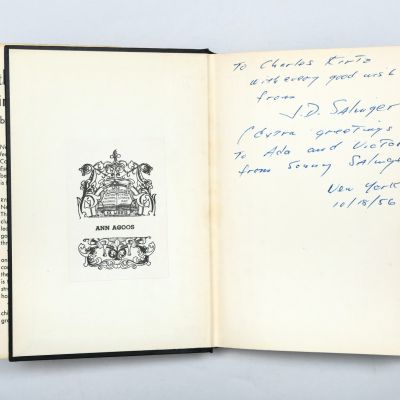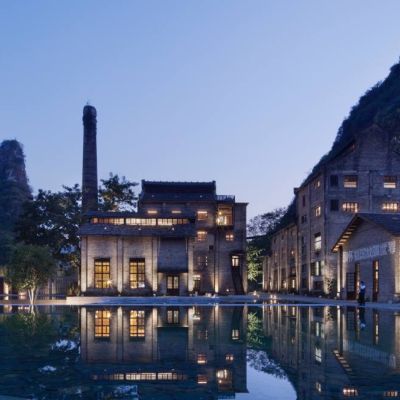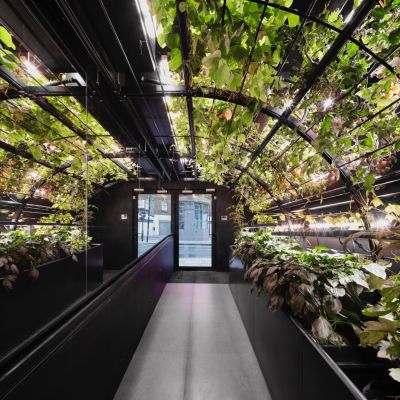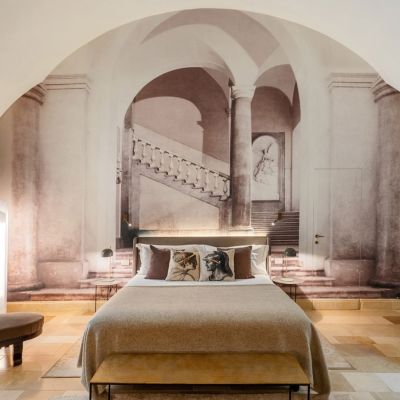Venice Biennale 2024: In Review

Our publisher explores the world's most famous Art Biennale, highlighting the good, the bad, and the downright trashy.

I’m not a fan of the Venice Biennale. I know one’s not meant to say this, but I’m not. The challenge I have is that so much of the so-called art just isn’t, to me.
To make matters even more challenging, how can one possibly focus on such nonsense when in one of the world’s most enchanting cities, Venice? My eye and heart are drawn far too easily to the wonderful architecture, the colours and waterscapes of a place like no other.
Over the years I’ve subjected myself to this biannual gathering of the ‘best in breed’ from each country that exhibits, numerous times. I’ve attended the opening week with its array of parties and gatherings and launches and it was fun but exhausting, continuously dancing like a dragonfly from one event to the next and waiting endlessly for water taxis.

I promised myself not to return but just a few years later I had dinner with my friend, Belgian art dealer Axel Vervoodt and he asked if I’d seen his final exhibition at Palazzo Fortuny, a Gothic palace at Campo San Beneto, in Venice. I answered I hadn’t, because I couldn’t face the throng of arty types and mass tourists and was too distracted by the beauty of the city to spend time visiting art pavilions.
He offered to walk around the show with me, and just like that, I found myself on a flight with an agenda to see nothing but his last great show in this wonderful space. It remains a highlight of exhibitions, not just because it was pure perfection but because it was with him.
Not wanting to return home quite so soon, for a few days I wandered around on my own. I asked a handful of people I know and trust for their recommendations and narrowed it down to needing to see the Australian, Polish and Egyptian pavilions. This sounded manageable.

Archie Moore’s exhibition, kith and kin, is breathtaking and one has no choice but to reflect. 65,000 years of his First Nation family genealogy, hand drawn on to the walls overlook a floating sea of government documents outlining the high rates of incarceration of Australia’s first people, is impactful and beautiful and tragic yet somehow a testament to survival against the odds. It comes as no surprise that it took the Golden Lion for the Best National Participation.
Both the Polish and Egyptian Pavilions were just across the canal from the Australian and in beautiful buildings. I often I find these to be as worth of one’s attention. The Polish contribution is two films, both narrated by civilian war refugees. Their voices are accompanied by gunshot and one is encouraged to repeat their words. Impactful and topical for the world we find ourselves in yet again.
The Egyptian show by Wael Shawky bridges sculpture to performance and looks at religious and national identity. Something again, most relevant in our war-torn world. Next door I stumbled upon Rome-based Pietro Ruffo’s wonderful works at the Venice Pavillion. Make sure not to miss this! I left the gardens of the Biennale behind and sought refuge on the roof terrace of The Danieli. A light lunch and a heavy Martini were needed by this stage.

The next morning I ventured out to the Peggy Guggenheim Collection, which remains a favourite because one can almost imagine living in the space. It’s the right mix of garden and home and art, like a perfect cocktail taken overlooking the Canale Grande: A twist of Picasso and a drop of Miro and a wonderful exhibition of Cocteau, as a side. I’d gone, again, because it is such an oasis after having seen the Willem de Kooning and Italy show at the Accademia, which has just the right number of works, both sculpture and canvas, to immerse yourself in without drowning, something one tries to avoid in a city of waterways.
The Robert Indiana show, The Sweet Mystery, overlooks the square of San Marco and is worthy of a short visit. It is almost direct above one of my favourite places, the Olivetti showroom designed by Carlo Scarpa in the late 1950s. It is exquisite and a temple to a man focussed on the finer detail. I am certain he would have been most pleased with the striking collection of works by Tony Cragg that one shouldn’t miss. The lower level of Palazzo Querini Stampalia is another glorious space by Carlo Scarpa, the great 20th century architect, I recommend visiting.

However, I was furious at myself for taking the time to go to the Fondazione Prada, a total waste of an hour and of a magnificent space. On a previous occasion I’d been so impressed that I made the mistake of not checking beforehand what was currently being shown, which is an installation by provocative Swiss artist Christoph Büchel. It is not controversy that Büchel is courting, in my opinion, but trash, and passing it off as art.
And precisely herein lies my challenge: Venice is an artwork, one that has taken hundreds of years to reach this degree of beauty. Much that is brought biannually to this great city is trying too desperately to grab your attention. And if it does, it is little more than momentary, fleeting.
Focus, instead, on the architecture, rise at dawn to enjoy the emptiness of her squares and lanes and the bustle of her waterways of laundrymen and porters, visit a handful of museums and collections that have not only been carefully curated over years, but are in sync with this enchanting city.








